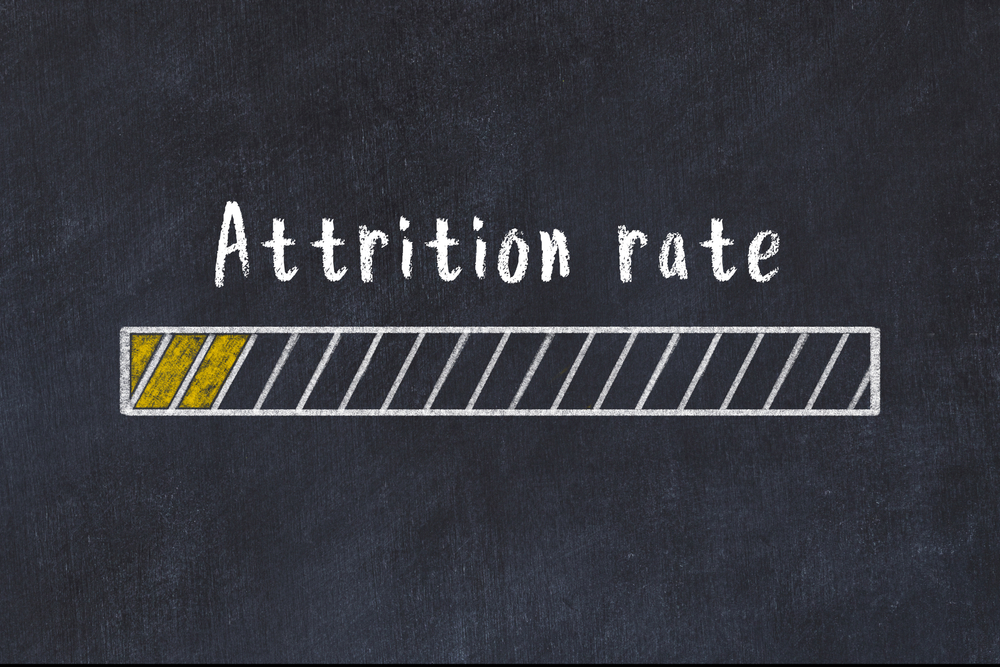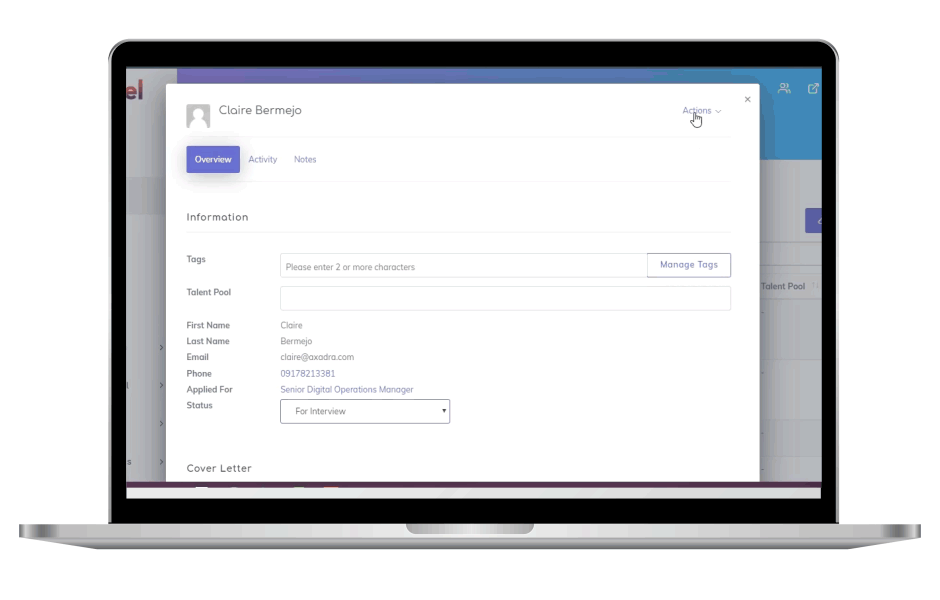One of your company’s most valuable assets isn’t a fancy pantry stocked with food, a newly-renovated conference room, or a fleet of trucks. Your company’s most important assets are its employees. And if workers don’t feel appreciated, they’ll leave, increasing the attrition rate.
But what does attrition rate mean?
In this article, we’ll go over everything you need to know about attrition rate, from what it is and how to calculate it to how to deal with a particularly high rate of departures.
What does attrition rate mean?
A company’s attrition rate is the percentage of its workforce or clientele that leaves over a given period and isn’t replaced. Analysts usually use percentages to determine attrition rates. For instance, if a company has 100 workers but loses 10 of them within a year, the attrition rate is 10%. Human resources workers often look at the attrition rate to find out how many positions are open or have been cut.
What is employee attrition rate?
The employee attrition rate is the percentage of a gradual yet deliberate reduction in an organization’s employees. At some point, employees will look for opportunities outside the company for various reasons. It might be for personal or professional reasons, and that’s okay. People are allowed to seek chances for career growth outside your company.
Types of Employee Attrition
Here are the four types of employee attrition that hiring managers can use to calculate attrition rates:
- Voluntary
Voluntary attrition means an employee decides to leave the organization. Their reasons may range from personal responsibilities, like taking care of a family, retirement, or accepting an offer from another company. - Involuntary
When a corporation terminates employees, this is known as involuntary attrition. Businesses may decide to terminate roles to cut staffing expenses or because the position is no longer required. Organizations frequently use involuntary attrition as a cost-control measure. - Internal
Internal attrition results from employees accepting a different position inside the same organization. They can be given a promotion or work in a different department. Typically, this would only apply to larger organizations where it could be necessary to compute attrition rates for particular teams or departments. - Demographic
This situation might be very troubling for a firm. When a certain demographic (age, gender, color, or disability) decides to quit your business, demographic attrition occurs. It can signify that you must improve company culture and revise certain policies. If a high attrition rate occurs in this area, look into it immediately.
What is a high attrition rate?
The attrition rate varies wildly depending on the company’s size. However, anything over 20 percent can be considered high attrition. If the rate is higher than 20% in any given year, you should investigate the possible causes and adjust accordingly.
Why is identifying the attrition rate important?
In a nutshell, determining attrition rates will enable you to assess your talent retention efforts more effectively. For example, if you find that many of your employees leave, it could mean that you aren’t giving them enough benefits or the best workplace. By measuring and examining your attrition rate, you can determine why employees are leaving and take steps to prevent it from happening again.
How to Calculate the Attrition Rate
As mentioned above, the attrition rate is when there’s a reduction in the workforce due to various factors that may or may not be avoidable. To carry out company attrition analysis, you’ll need to learn how to determine the attrition rate.
Here’s an explanation to better understand how to calculate the attrition rate:
- Conduct a headcount of the total number of employees in your company from the start of the year. Let’s say you have 500.
- Record the total number of employees that leave your company during the year. For instance, 50 people left your organization in voluntary and involuntary attrition.
- You should also record the total number of employees your company hires during the entire year. Then, you can start adding up the numbers. For instance, if you hire 100 people in one year, your total headcount would be (500 + 100 = 600).
- The next step is to calculate the average number of employees you have in your company during that year. In this case, the number is (500 + 600)/2 = 550.
- Then, calculate the employees left in your organization from the number of average employees in percentage. For this example, we have: (50/550) x 100 = 9.09%.
Attrition Rate Formula
Attrition Rate = (number of employees that left the company / the average number of current employees) x 100
Major factors that influence employee attrition rate
Now that you know what an employee attrition rate is and how to calculate it, here are the major factors that affect employee attrition:
- Personal motivation
Your employee may be undergoing major changes in their personal life, compelling them to have a career shift. The reasons are endless: a mid-career professional wants a post-graduate degree, new parents want to move to another city with better schools, etc.As long as you conduct comprehensive exit interviews, you can keep in touch with these employees and assure them that if they want to work for your company again in the future, they’re welcome to do so. - Professional motivation
This is where your HR team can play a crucial role in determining and controlling high attrition rates. An employee might leave simply because there aren’t enough opportunities in your company for career progression. This is especially true in technology companies, where talented individuals must compete for seniority or managerial positions as they advance up the career ladder.To avoid professionally motivated attrition, create a long-term technical track for each position in your company. Work with the higher-ups to ensure that each rank-and-file employee’s career path is clear and rewarding. - Challenges with the workplace
Challenges can range from not having the right tools to do a job well to leadership and teamwork that don’t work well together.This type of attrition is relatively easy and simple to fix. Just ask for regular feedback, listen to employee concerns, and address any gaps they may have in their experience as your employee. An employee who’s happy and fulfilled with their job typically won’t leave the company if most of their needs are met. - Poor employee-to-role fitment
We have all witnessed enthusiastic employees during the recruitment process and onboarding program, only to leave a month or two later. This is often a clear indicator that the job or the opening was not fit for that candidate to begin with.If you know how to create a good candidate experience, you can lower your attrition rate for this factor. That means fine-tuning your job descriptions and conducting detailed interviews with candidates. Candidates should know exactly what they’re signing up for so that you’re also less likely to witness new-hire attrition.
How to reduce employee attrition rate
As mentioned above, some reasons for employee attrition are a work environment that’s not conducive, a lack of confidence in the market value or leadership of the company, an absence of professional growth, and many others.
However, you have reasons to be concerned when the attrition rate exceeds a certain figure or threshold. A high attrition rate can lead to leadership gaps in your organization, especially if employees in senior positions leave. If minority groups are the ones leaving, it can also negatively affect the diversity in your workplace.
Here are a few ways to effectively reduce the employee attrition rate in your company:
- Transparent Communication
There’s nothing worse than working for a company that doesn’t know how to communicate effectively. Those types of companies will see their best employees walk out the door. To avoid this, always connect with your employees and provide them with constructive feedback. It’s also important to relay company updates as soon as they happen.Be sure that you’re communicating honestly and openly with them so that whenever a problem arises, they can trust you to fix it. Don’t leave your employees in the dark. - On-The-Job Training
Offer employees job training, perhaps with an industry expert or a motivational speaker. If there is a seminar, a workshop, or a conference outside the company, offer to send them. Employees are more likely to stay if they see that their company is willing to invest money in them. - Show Appreciation
One of the best ways to lower high attrition rates is to keep your employees interested and motivated by letting them know how much you appreciate them. Appreciation can come in both big and small ways.For instance, you can tell your employees how proud or amazed you are of them and their work. You can either send this out as an email blast to everyone in the company or announce it during a weekly or monthly town hall. Be specific with your praise so they know you genuinely appreciate their work. - Goal Setting and Engagement
When employees know the company’s expectations of them and the goals they’re working towards, they will be motivated to reach those goals—even better if there are incentives involved. If it’s possible, you can also ask your employees to participate in the process of setting their own goals. When employees set their personal goals, they’ll receive more satisfaction once they reach those goals and will be less likely to leave the company.An additional strategy is to offer incentives for them to refer new employees. Incentive programs are effective in boosting employee output. With the help of employee referral tracking software, businesses can keep tabs on employee referrals and keep referring employees updated on the status of the individuals they refer. - Flexible Scheduling
Employees perform better when given the option to work remotely and set their hours. Flexible work arrangements give employees more freedom in their schedules and environments than the typical 9-to-5. These arrangements consider employees’ unique situations and give them more leeway in balancing work and family obligations. And since more candidates are looking for remote hiring processes and flexible work schedules, implementing this will reduce high attrition rates.
Final Thoughts
There are several reasons employers ask, “What does attrition rate mean?” From this article, we hope you already understand the definition of attrition rate, how to calculate it, what influences it, and the various ways you can improve it. Additionally, you can conduct an attrition vs. retention survey to learn how well your business keeps its employees. If you have a higher attrition rate than your retention level, then you have a problem on your hands, and you’ll need to sort that out as soon as possible.


















